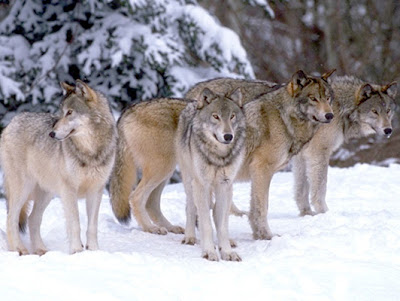Among the greatest tragedies humanity is committing upon the
earth is rampant destruction of rainforests. Every year we destroy an area of
forest/jungle roughly equivalent in size to Costa Rica (19,730 sq miles or
51,100 km²). This comes out to roughly .4% of the worlds remaining forests per
year. That number sounds small but if we continue at this rate (without
factoring in the expected rise in this rate as the human population continues
to increase) we will lose almost half of the worlds remaining forests and
jungles by 2100. Jungles are destroyed for a variety of reasons; commercial
logging, land conversion to farmland or pasture, firewood and other energy
purposes, and clearing of land for mining purposes to name a few of the major
contributors. Our destruction of the jungles of the world is having a
devastating affect on wildlife all around the planet.
So
how important are jungles to the world’s wildlife? Well, basically the jungles
are to land animals what coral reefs are to sea creatures. Like coral reefs,
jungles have an exponentially higher level of biodiversity in comparison to
other habitats (biodiversity is the variety of life in any given area, so a
habitat with a high biodiversity will have a much larger number of species in a
small area when compared to that of another habitat, jungle > desert). So
consider that jungle only covers about 2% of the world but still contains
about 50% of the worlds known species of plants and animals. This alone make them the crowning jewels of life on land and humanity should cherish and protect them.
The
most obvious way deforestation is affecting wildlife is through habitat loss.
The alarming rate at which jungles the world over are disappearing is causing
an even more alarming rise in the extinction rate of both plants and animals
alike. Obviously once an area of jungle is chopped down there is less habitat
for a given species to live in and their numbers are going to go down. This
however, isn’t the only consequence of this habitat loss. As more and more forest
is chopped down the remaining jungle becomes fragmented. This fragmentation of
habitat can be just as lethal to a species. The reason for this is that for any
area of habitat to maintain a stable population it needs to contain enough room
to feed the population and sustain genetic diversity. When a population gets
trapped in a fragmented patch of forest and are thus genetically isolated they
begin inbreeding. Inbreeding, among many other problems, causes sterility and a
population that cannot reproduce cannot survive.
It’s
not just the animals that live in jungles that rely on them for survival either.
There are countless species that rely on jungle processes that may not live
anywhere near one. The reason for this is that jungles are so big and so
powerful that they drive weather patterns worldwide. Water that evaporates in a
jungle may not fall until it has drifted to a desert a thousand miles away
making life possible in an area that otherwise may be nothing but shifting
sands. The fact is the way that jungles affect the world’s climate is so
complex that we have no idea how its loss will change the climate until the
forest is gone and the damage is done. If the increase in the severity and
frequency of major weather events in the last decade is any indication of what
is to come it’s obviously in our best interests put a stop to anything and
everything that is likely contributing to the problem and deforestation should
be amongst the top of such a list.
Jungles
are far too important to nearly every living thing on the planet to continue to
thoughtlessly destroy them. The reasons for the preservation of forests are so
fundamental it’s almost unbelievable to me that there is a debate on the
subject at all. Put simply we need them. We need them to stabilize climate, we
need them to scrub CO2 from the atmosphere, we need them to spread
life giving rains around the world, we need them to provide us with ingredients
for the countless pharmaceuticals that keep us healthy and cure disease. We
need jungles as much as any species that calls them home. Jungles are the crown
jewel of life on earth and almost every land species on earth is in some way or
another beholden to their processes. It’s time we give them the respect they
deserve as givers of life and protect these natural wonders, and thus the
millions of species that call them home.



























